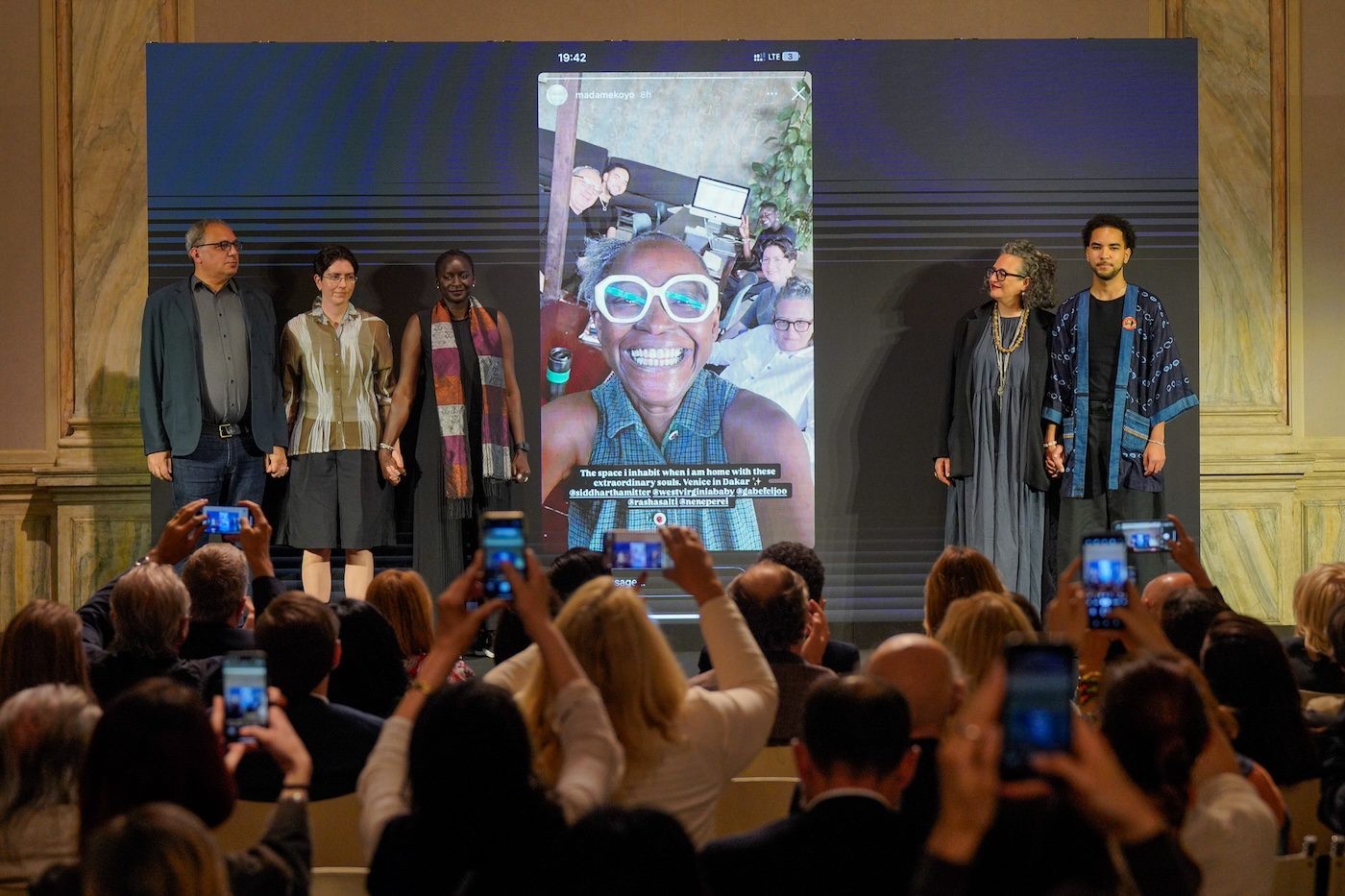A Show of Parallels and Superlatives
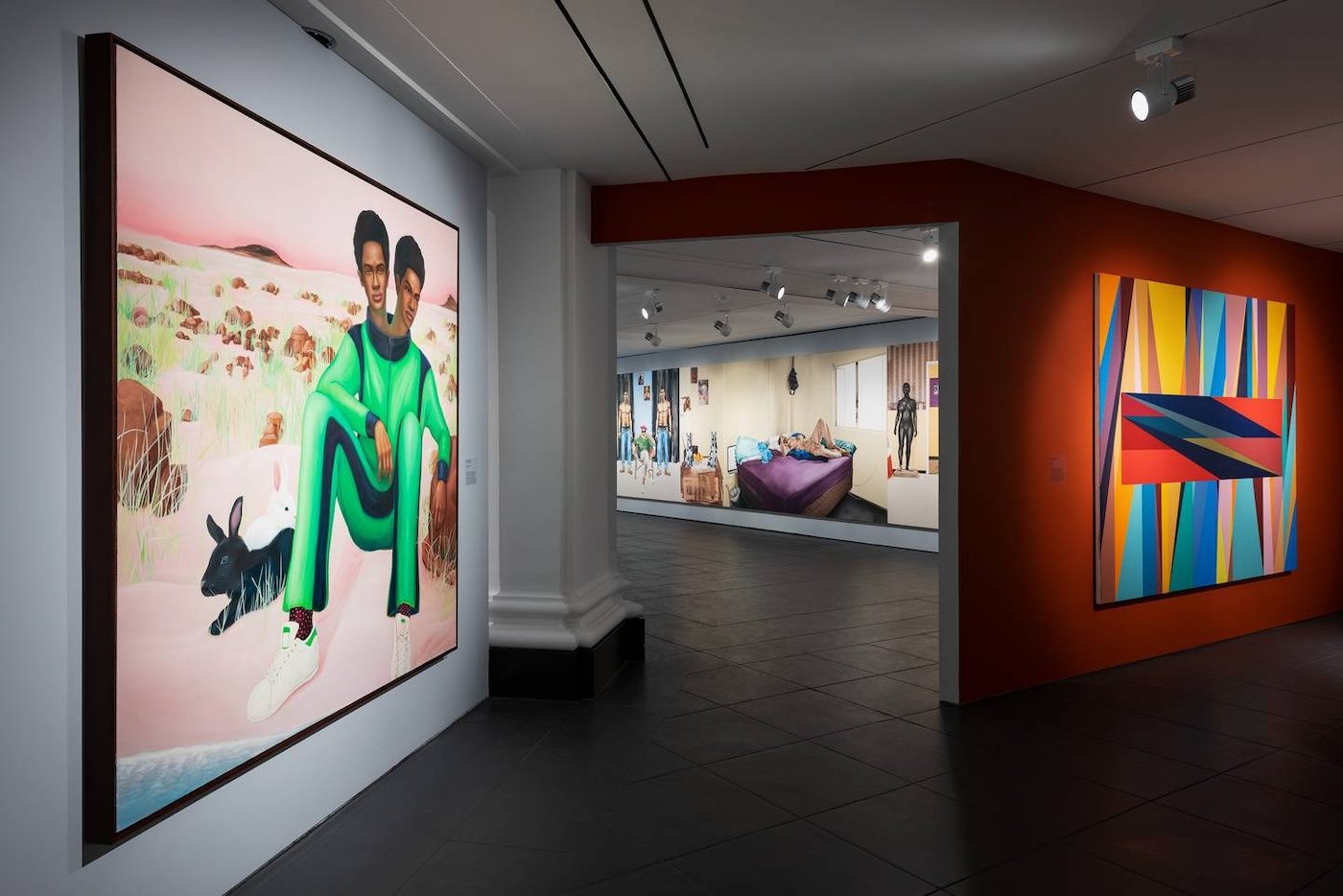
21 June 2024
Magazine C& Magazine
Words Nan Collymore
6 min read
C&'s Nan Collymore visited the highly acclaimed exhibition at the Brooklyn Museum and found many things to fall in love with.
The exercise of for-profit galleries, collectors, and dealers amassing artworks is subject to many interpretations: as a way of enabling emerging artists to find a supportive audience; to preserve an artist’s work and legacy; or, in the more cynical view, as a way for the collector to benefit from tax write-offs in the guise of philanthropy. Either way, it remains a market, one based on capitalist ideals and one where the makers can be exploited and invisibilized.
However, not only profit galleries, collectors, and dealers are part of the capitalist system, but also non-profit institutions like museums do work with capitalist strategies to secure funding. In the case of the Brooklyn Museum this has become apparent in the protests against the Museum’s financial ties to Israel and demands to divest from them. The intricate ties between the art and finance markets give rise to a labyrinthine environment, one that fosters predatory practices. The secondary market generally excludes the artist altogether and is run much like any other commodified capitalist system.

Installation view, Giants: Art from the Dean Collection of Swizz Beatz and Alicia Keys, February 10, 2024 – July 7, 2024. (Photo: Danny Perez)
But walking into New York’s Brooklyn Museum this spring my mind unexpectedly quieted all that mental noise as I immediately fell in love with the art collection of Kadeem “Swizz Beatz” Dean and Alicia Keys. Not to say that there isn’t an urgent need for a radical rethinking of the art world, but for that moment at least, I could enjoy those museum walls, quieting my concerns for how museums are as much part of the economic structures and mentality of the neoliberal market and of the state as much as banks. Starting in 2014 and now amassing thousands of artworks, the Dean Collection already has a reputation: the two collectors have established their place as sagacious pursuers of some of the most exciting contemporary art.
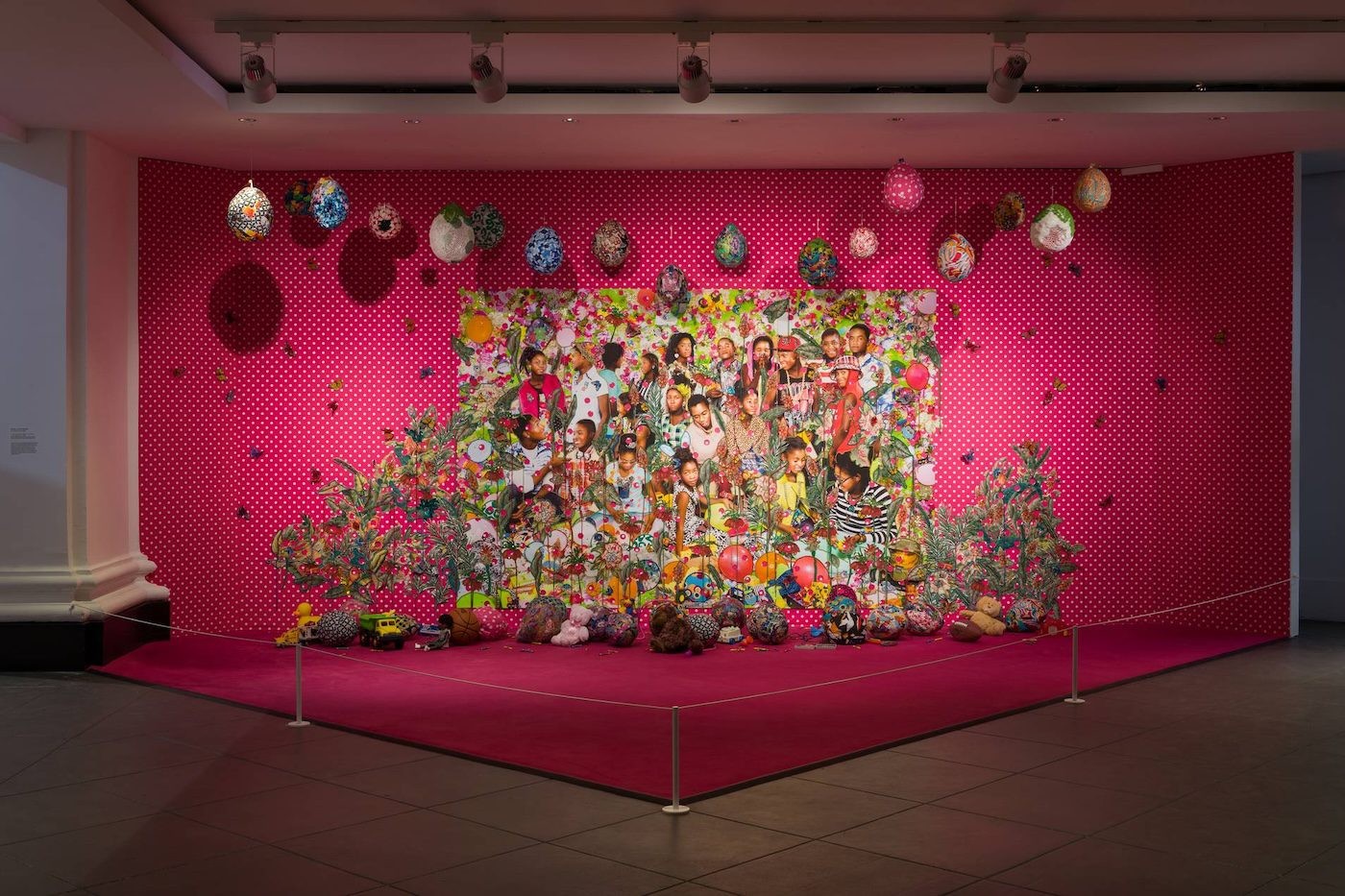
Installation view of Giants: Art from the Dean Collection. Photo: Paula Abreu Pita.
A distinguishing feature of the Dean Collection is its innovative use of digital technology to engage audiences and foster community dialogue. Through social media platforms, virtual exhibitions, and interactive experiences, the collection is managed in such a way that it transcends physical boundaries and invites audiences from around the world to participate in the aesthetic process. With their strategies #tdc20 and #nocommission, they are working to expand access for beginning collectors and providing platforms for emerging artists to have their work seen more widely.
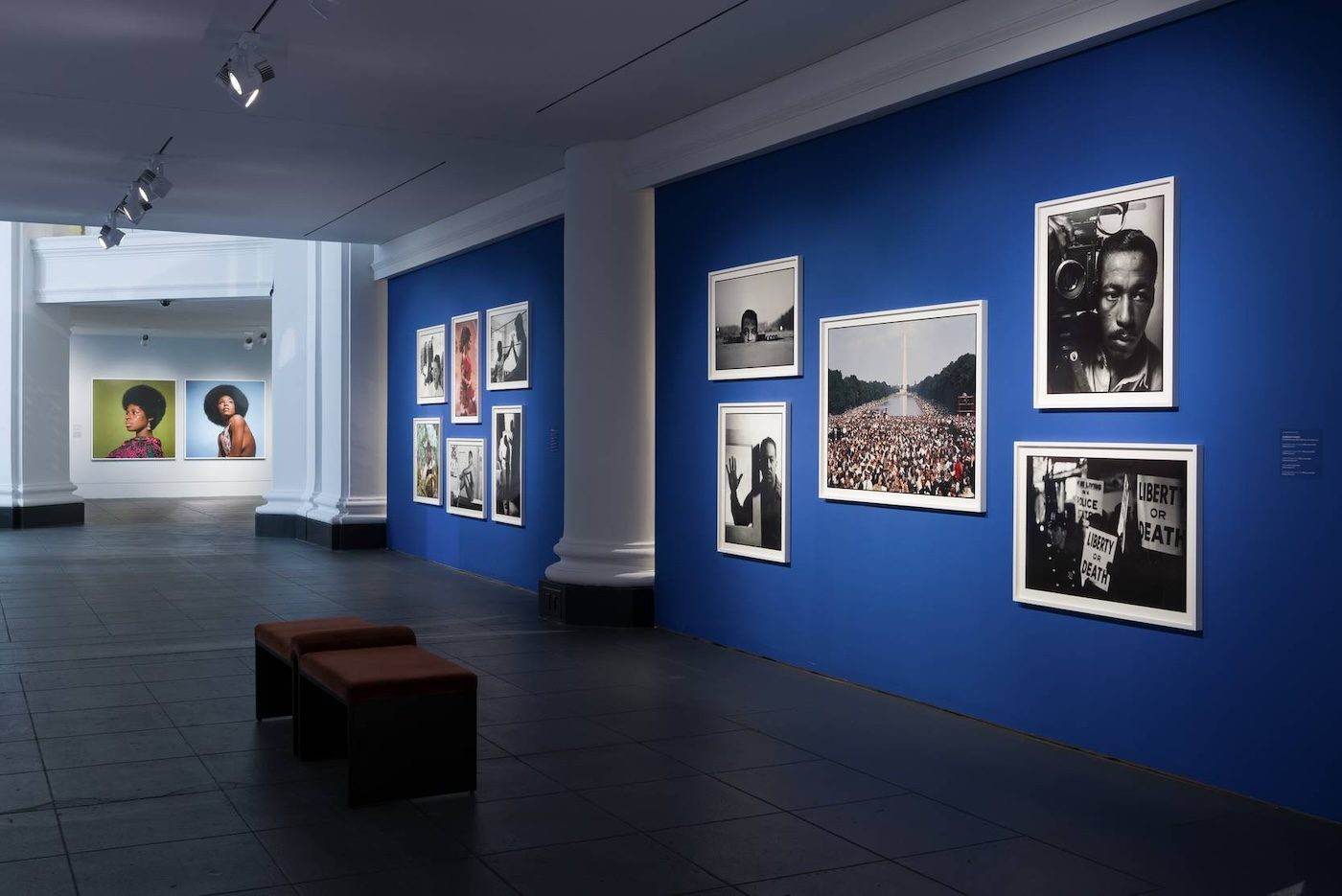
Installation view, Giants: Art from the Dean Collection of Swizz Beatz and Alicia Keys, February 10, 2024 – July 7, 2024. (Photo: Paula Abreu Pita)
This exhibition, Giants, is the first time that such an extensive collection – more specifically a selection of about 100 works by thirty-seven artists – has appeared in a museum and the first thing to notice on entering is not the giant portraits of Swizz Beatz and Alicia Keys or the many corridors to their world, but the Marvin Gaye being played through visible speakers positioned around the space, rendering the museum as living room. When Marvin and Diana Ross sing “You Are Everything,” the lyric “today I saw somebody who looked just like you” gives potency to the surroundings – it’s like stepping into a room of mirrors. Our faces, bodies, and lives reflected back at us at every turn through photography, painting, and collage. We are everything.

Installation view, Giants: Art from the Dean Collection of Swizz Beatz and Alicia Keys, February 10, 2024 – July 7, 2024. (Photo: Danny Perez)
Each art-scape is separated by differently colored walls, subtly partitioned so that with each change in room, the mood changes. The works aren’t arranged by era or medium, but by meaningful curatorial choices by the Brooklyn Museum’s Kimberli Gant that show heart and art-historical discernment. Of the many beautiful moments, one stand-out to me consists of the meeting of three artists who work with fragmented bodies, collage, and Black embodiment: works by Frida Orupabo, Zohra Opoku, and Deborah Roberts are placed cleverly next to each other, as they are in my mind. Sitting in quiet conversation: Opoku’s carefully stitched discreet intersecting of the human body and plant life, Orupabo’s gathering of archival material layered into mesmerizing, animated worlds, and Roberts’ collages of Black girls as they can only be imagined by us.
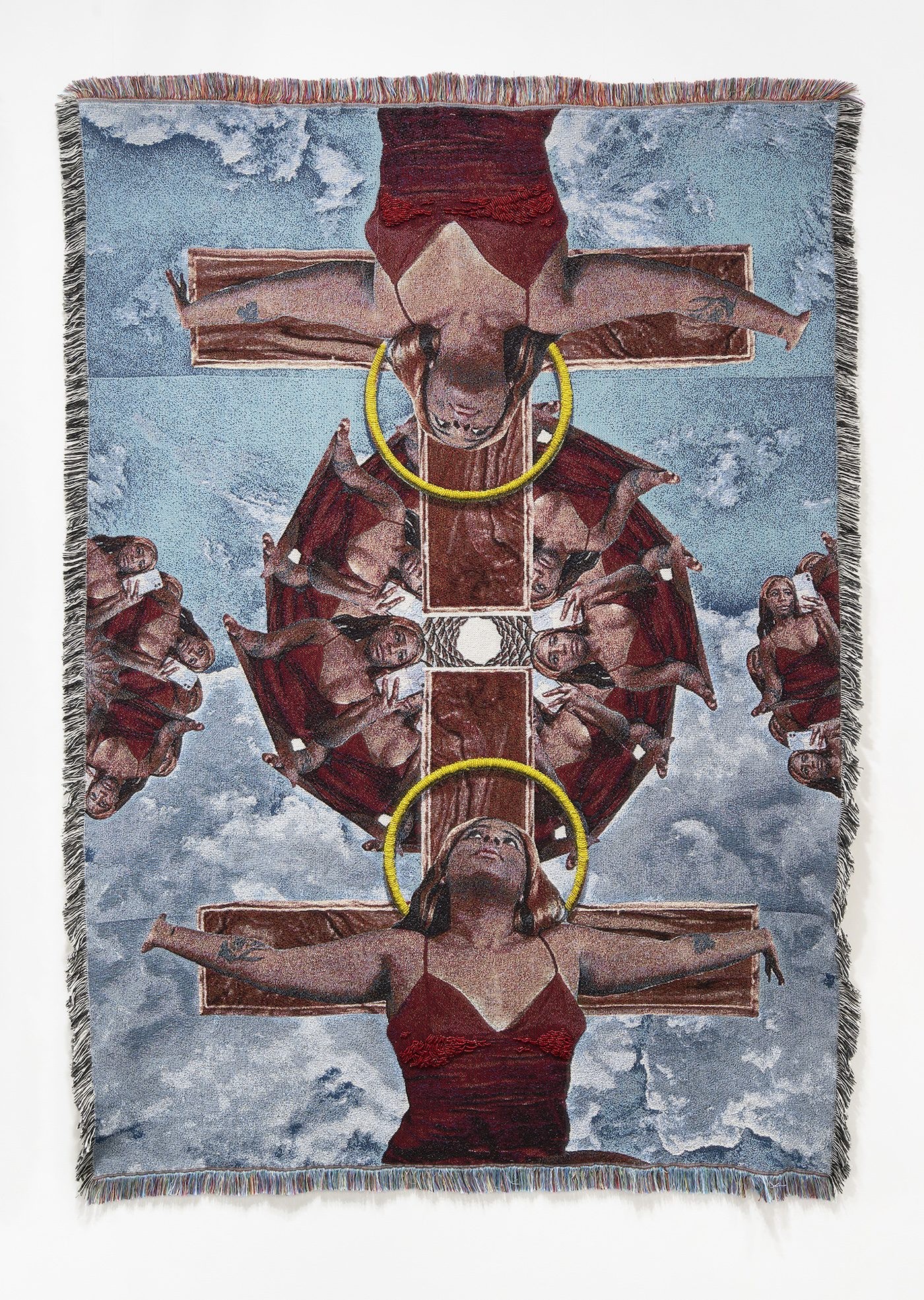
Qualeasha Wood. Genesis, 2021. Cotton jacquard, glass beads. The Dean Collection, courtesy of Swizz Beatz and Alicia Keys. © Qualeasha Wood. (Photo: courtesy of the artist).
The photography of Deana Lawson and Kwame Brathwaite allows for reverential-like pauses as I walk through constellations of paintings by Qualeasha Wood, Jarvis Boyland, Lynette Yiadom-Boakye, and Tschabalala Self. Wood’s 2021 Jacquard tapestry, Genesis centers herself in the middle as god-like, referencing the elevation that Black women (femmes in particular) are afforded in the online space, only to be struck down or crucified irl. In his own corridor, the devastatingly detailed paintings of Meleko Mokgosi punctuates the prodigiousness of this exhibition display – its warmth of color, its heightened presence of self, and all of the gentle surprises exquisitely placed to remind us of the significance of seeing Blackness immortalized by artists from across the globe.
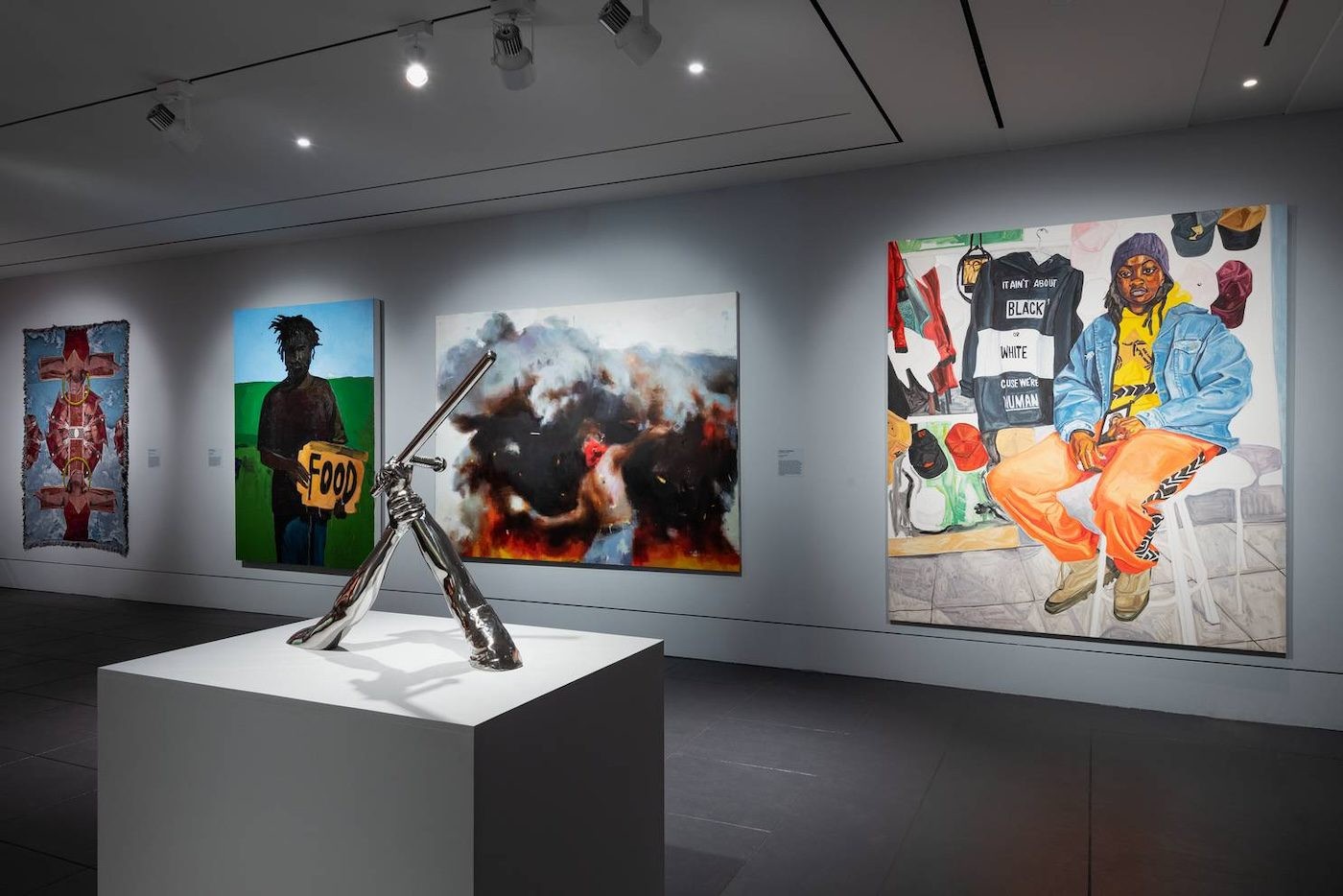
Installation view of Giants: Art from the Dean Collection. Photo: Danny_Perez.
This is a show of parallels, one that is in the same breath gentle and formidable, unattainable and accessible, one that expresses the beauty of art made by Black artists while also reminding us of the unsightly world with which these artists and the Dean Collection co-exist. In a world driven by power and influence, Beatz and Keys’ Dean Collection is playing a significant role in re-assessing what an art collection looks like, theirs could be seen as having a dual purpose — to develop the language of visual art in communities whose access is limited and purposefully exclusionary and to use wealth as a means to propagate ideas that reconsider art historical framing. Even so, the works in this exhibition and the venue that they sit in, remind us of the inequities that prevail in the art world—a world where displays of wealth are celebrated, while expressions of outrage are discarded beneath a thin veil of contempt.

Installation view, Giants: Art from the Dean Collection of Swizz Beatz and Alicia Keys, February 10, 2024 – July 7, 2024. (Photo: Danny Perez)
Giants: Art from the Dean Collection of Swizz Beatz and Alicia Keys on view through July 7, 2024 atBrooklyn Museum in New York.
Nan Collymore is a writer and an inter-disciplinary artist. She is interested in the body and land, and how the two co-exist. Her work is an attempt at creating a language that re-imagines the body as land and as a corporeal topography. She is the founder of small publishing house L’Habillement and lives in New York.



